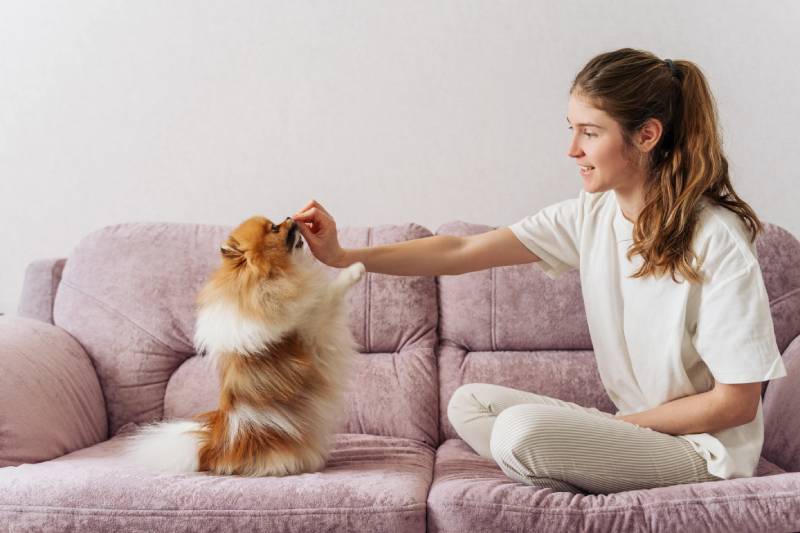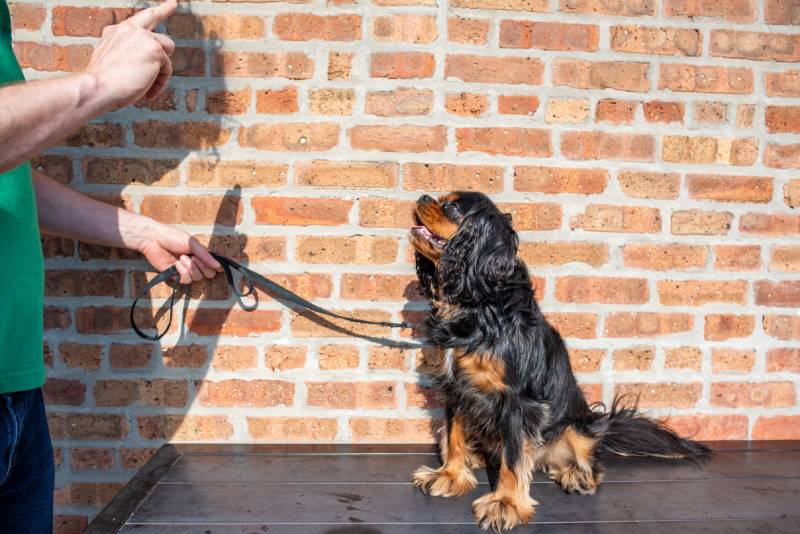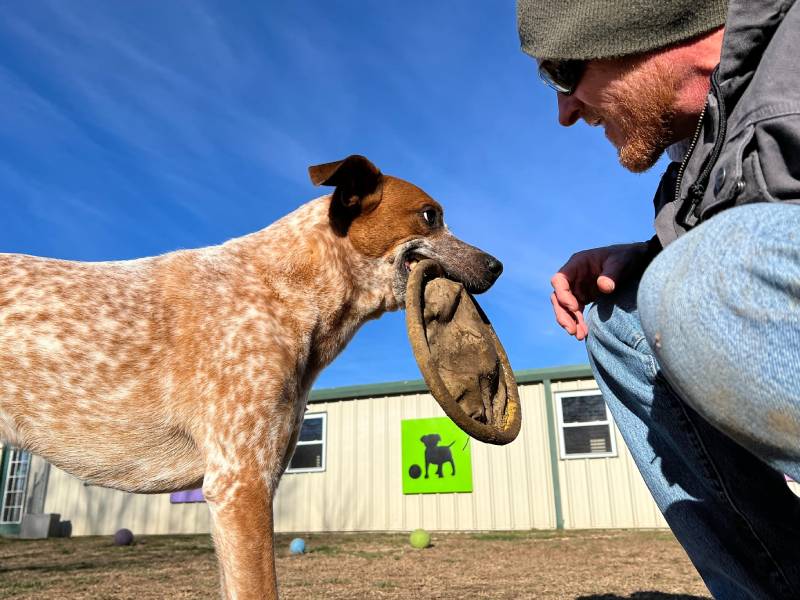
Like babies and young children, dogs naturally have little impulse control and generally just do what they want, when they want, without any concept of delayed gratification. Also like kids, dogs can be taught to master this crucial emotional skill through cleverly designed games. For ideas on how you can do this with your dog, check out the best impulse control games here and get started ASAP!

The 7 Impulse Control Games for Dogs
Impulse control can be taught from a young age, but it’s not something that all dogs master. How exactly do you know that your dog is struggling? Things like pulling on their leash, rushing to greet people, barely waiting for you to open the door before running outside, and snatching snacks from your hand are all perfect examples and are good signs that you need to try some of these impulse control games.
1. Leave It
“Leave it” is a common but essential command for establishing impulse control boundaries with your dog. First, select a high-value treat that your dog will go bananas over, like a piece of lunch meat. Leash up your dog, then clearly show your dog the treat while holding it out of their range. Tell them to leave it, and ignore their initial tugs at the leash. Once they settle down and let the leash go slack, you can praise them and give them the treat.
This command can be used with lower-value treats or toys to redirect their attention, and that’s very helpful for many dogs. However, we suggest starting with this method and removing the leash as they learn the command better. “Leave it” proves especially handy when you drop food on the ground and you don’t want your dog to immediately scarf it down!

2. Red Light, Green Light
Yes, the classic children’s game can be adapted for canine impulse control training! The only thing you need to get started is a leash. Leash your dog up for a walk along a preferably familiar path, then suddenly stop while saying, “Red light!” Your dog will probably be confused at first and maybe tug on the leash, but you should stand firm and ignore the tugging while also ignoring them. Wait for them to let the leash go slack before continuing.
When you resume walking, first say, “Green light!” By teaching them that “green light” means go and “red light” corresponds to immediately stopping, you can make your dog stop what they’re doing on cue. This is super useful for safety purposes, such as if your dog runs in a crowded street to retrieve a toy.
3. Drop It
“Drop it” is similarly important to “leave it” since both are important to keep your dog safe and keep them from putting harmful objects in their mouths. That doesn’t mean it can’t be fun, though! Take an ordinary old toy of theirs that’s not really anything special, then choose a really delicious high-value treat your pup loves.
First, show them the toy and encourage them to play with it for a few seconds while concealing the treat. Then, show them the treat and say your command as they immediately ditch the toy for your super awesome treat. Repeat this regularly in short sessions every day to reinforce the command, and soon enough, you can apply the command to more advanced training methods.

4. Puzzle Feeders
Puzzle feeders are the perfect solution for those dogs that swallow their food too quickly, and they help reinforce your other impulse control lessons too. Snuffle mats are good options, forcing your dog to search through a mat for treats or kibble, but there are tons of puzzle-feeding options out there. Stuffing a Kong with peanut butter or cream cheese is always a fan favorite for the peckish pup and offers a healthy way for them to get mental enrichment during downtime.
Used as incentives or just passively with other techniques on this list, puzzle feeders are a great way to help turn your extremely restless food-motivated dog into a patient problem-solver.
5. Wait for Food
One of the simplest yet most effective impulse control games can be done at your dog’s mealtimes to teach impulse control around food, which helps further discourage idle grazing because your dog’s first instinct is no longer to devour every floor crumb.
To start, take your dog’s food bowl at mealtime, and slowly lower it to the ground while saying, “Wait.” If your dog acts excited and starts moving around or jumping, raise the food bowl back up and ignore them. When they’re calm, it’s chow time. Repeat this at every mealtime to further strengthen your dog’s impulse control.

6. Settle on Cue
Teaching your dog to settle on cue can be done as early as puppyhood and in fact, works best when you start early. Select a comfortable blanket, mat, or bed to be your dog’s settle spot, and put it where you want your dog to settle. Now, the fun part begins!
Start slowly but generously with treats. Show your dog the spot, and heavily shower them with praise and a treat when they show the least bit of attention to it. When you’re doing this, use your chosen command. “Settle” works fine, but “Go to your bed” can work too. Settle is handy for when you want to keep your dog out of the way when you host an event or have people over and provides you with more control over their safety.
7. Tug & Settle
For this game, your dog will need to know a settle and release command already. To get started, take their favorite rope toy, and start a rousing game of tug of war. After a few seconds to a minute, drop the rope while saying your release command. Repeat this step until your dog understands that the game is over when you say the release command.
Next, start adding in your settle command after the release phase to tell your dog to go to their settle spot learned earlier. When they go to lie down, immediately start the game back up again. This game helps keep your dog calm in very exciting situations, which you can imagine potential uses for at the dog park or on walks.

Conclusion
Impulse control doesn’t come naturally to dogs, but they’re fast learners with enough patience and plenty of treats. Start with simple commands, and you can then help reinforce that foundation with puzzle feeders and advanced games like Tug & Settle.
Featured Image Credit: Galina Tsyrulnik, Shutterstock



